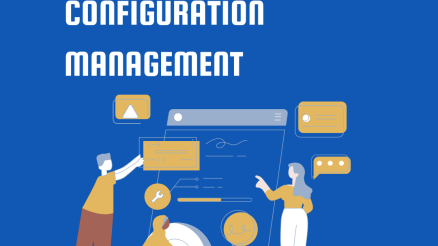Communication has a central role in change management.
Why?
Because successful change management is all about how leaders and managers present and discuss change.
Many research evidence suggests that communication is one of the biggest driver of change as it explains need of change and how that change will be achieved.
It is also found that change management face failure if its leaders don’t know how to communicate change in an organization.
The research also revealed that change communication should be two-way. It is about telling and listening.
Communication is relevant throughout the change process. It is not that the leaders use communication to explain ‘why’ question of change but communication is also important tool to overcome resistance against change.
So, the purpose of change communication is to influence the opinions of employees, customers, stakeholders and whoever is affected by change.
In this blog post, we’ll discuss how to communicate change in an organization, what are the important aspects of change that need special focus while communicating to diverse audience.
Let’s check out it.
08 Ways to Effectively Communicate Change in an Organization
Here are eight ways for communicating change with your entire team during transformation projects:
1. Communicate the reason of change
Employees don’t accept change easily. They resist it. It’s the primary job of change leadership is to share their vision of change with them. The ‘why’ question about change should be answered satisfactorily.
In order to involve employees in change management then make sure that they understand why change is inevitable. What are those factors which are affecting organizational change.
When employees recognize why changes are being made, you know you’re on the right route.
Change leaders should be communicating reasons of change openly and honestly. This communication should be clear and straightforward.
Make sure that there should be no ambiguous statements made by leadership while explaining reasons of change. This candid style of communication will kill every confusion, rumour and gossip around change.
2. Top-down communication
Employees want leaders at the top to inform them first about the current situation, obstacles, and outcomes.
The CEO should make the initial announcement to all employees (preferably in person), and then candid and two-way team talks with directors, managers, and supervisors should follow.
When employees believe their leaders do a good job of alerting them of change initiatives and that their supervisor is an ardent supporter of changes that impact their team, then you’re on the right track.
3. Describe how they will be affected by the change
Employees are curious about the impact of change on their personal and professional lives. They want to understand that:
Is their role going to change?
Will they be evaluated in a different way?
Is there going to be a new supervisor or team?
Recognize that things will be different and that the effort required to change will be worthwhile. Acknowledge that many employees will be concerned about the future and that their reaction to the change will be emotional.
Give them both good and negative news related to the transformation. Also, appreciate them for their cooperation, patience, and unwavering loyalty to the organization.
4. Communicate change plan
Give employees a detailed plan of what will happen and when. The better they understand what to anticipate, the more comfortable they will be with the procedure.
Discuss what you know, what you don’t yet know, and when you plan to learn more. Employees will want to know where they fit into the larger strategy and what is expected of them once they have it.
This is the point at which they must accept and commit to the change. You can try to target and customize your messaging to multiple audiences if some employees are more critical to the success of the transition than others.
5. Allow employees to ask questions and express Concerns
This is the most important stage in keeping staff interested. Allow for two-way communication so employees can ask questions and receive responses. An anonymous survey can help, but wherever possible, we prefer face-to-face meetings.
You’ll know you’re collecting feedback when your employees feel like they’re being questioned about changes that affect their jobs.
6. Listen To feedbacks
Communication about change management must be two-way. You may assume you’ve created the world’s best change implementation process, but if you’re not listening to the people who will be affected by the change, you’ve just failed.
It is possible to be firm in your choice to change while still allowing people who will be affected to have a voice in how the change is accomplished. To get feedback, use any of the following communication channels:
Meetings, especially in smaller groups, to answer all the questions of employees
Online chat rooms or forums that encourage collective discussions about common issues
Throughout the transition, surveys are conducted to assess how people are reacting to the change.
7. Don’t be scared to repeat things
The importance of repetition in change management communication cannot be overstated. To properly comprehend and support the change, employees will need to hear about it many times and in many different ways.
People are preoccupied with how a change will affect them personally when it is initially disclosed, and they don’t pay attention to the facts. Emotional responses and initial reluctance to change distort their judgement, making it harder for them to comprehend the goal.
When you repeat your message, you provide employees more chances to learn why the change is taking place and how it will be implemented.
8. Develop a communication strategy
It’s important to make a change communication strategy that will increase understanding and acceptance of a new change.
Communication strategy outlines objective of communication, identification of target audience, communication methods and channels, and what would be main activities under change communication.
Strategy guides all the important stakeholder to remain on one page regarding change communication. It also helps to mobilise resources required for communication and track progress on communication.
Final Words
Change is unavoidable but it is often inconvenient. Communicating change to employees is vital for a successful change management process. An effective communication is that which not only provides answers to confusions and questions but it encourages critical thinking, creativity and morale of employees. There are some ways which helps change leaders to learn how to communicate change in an organization.



